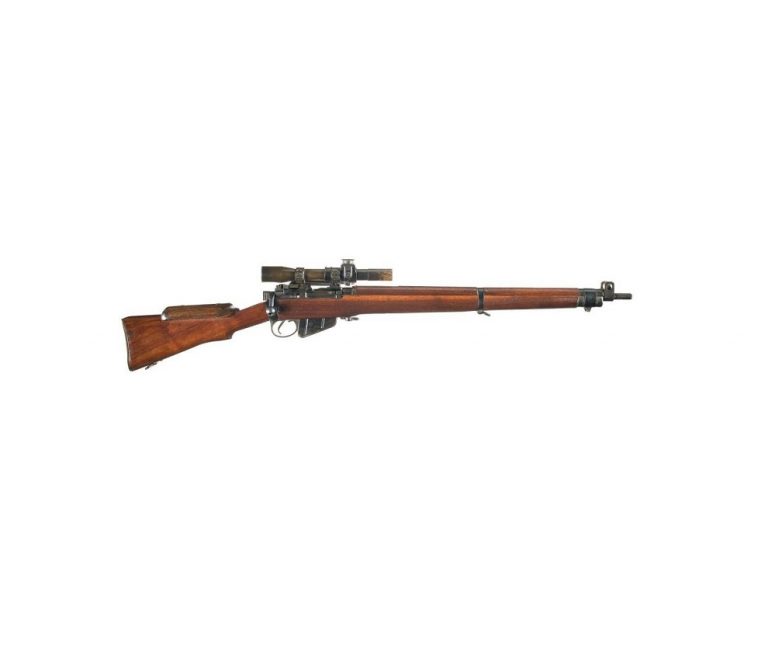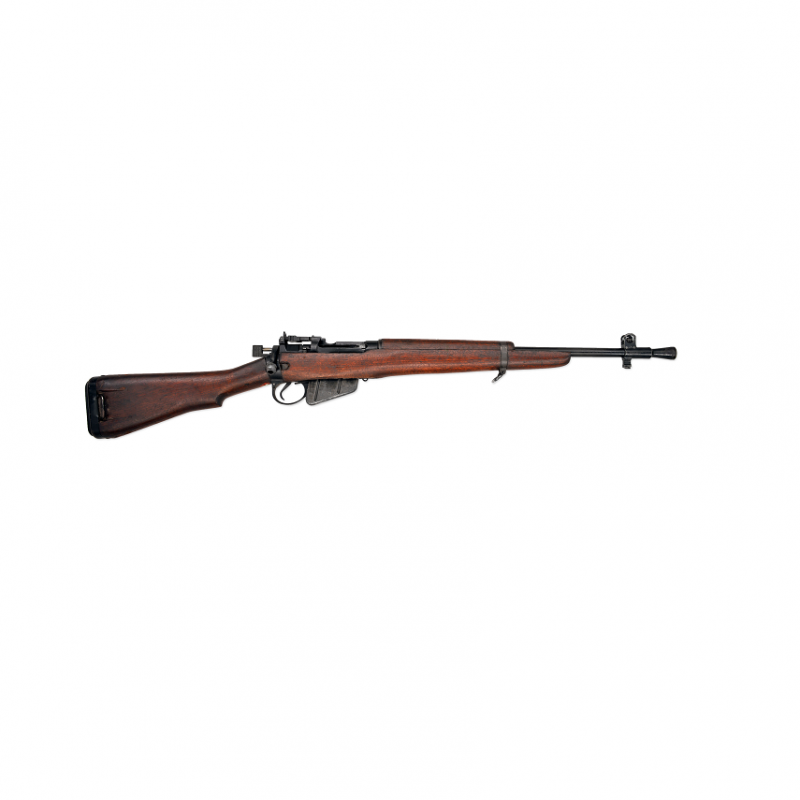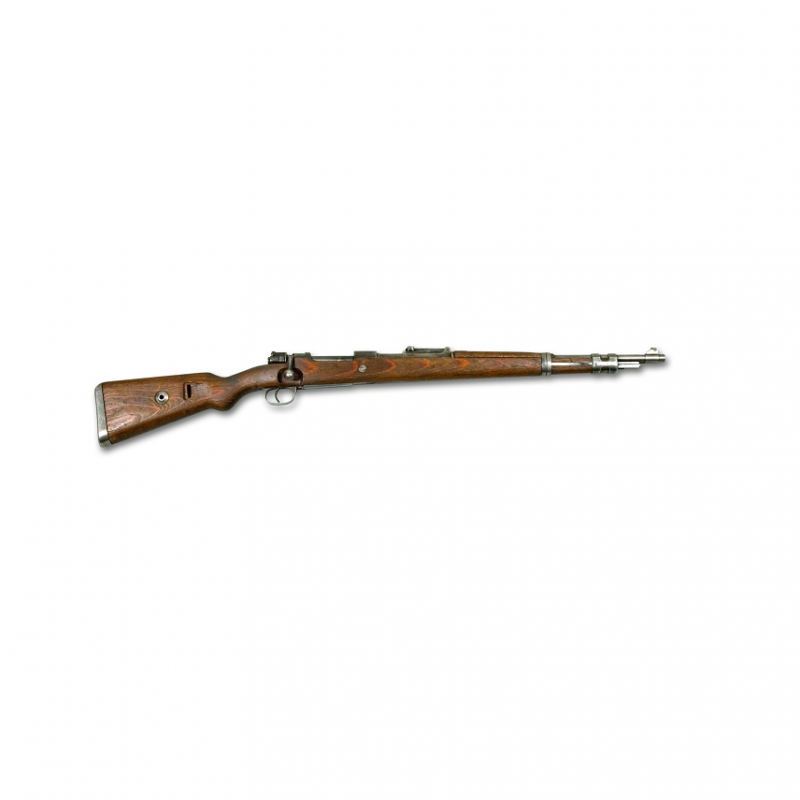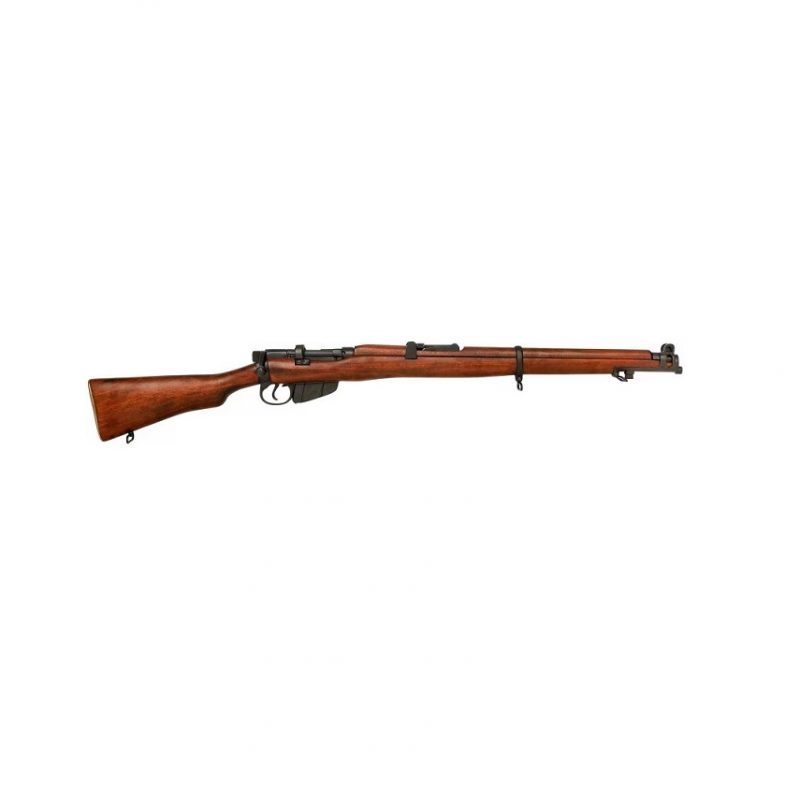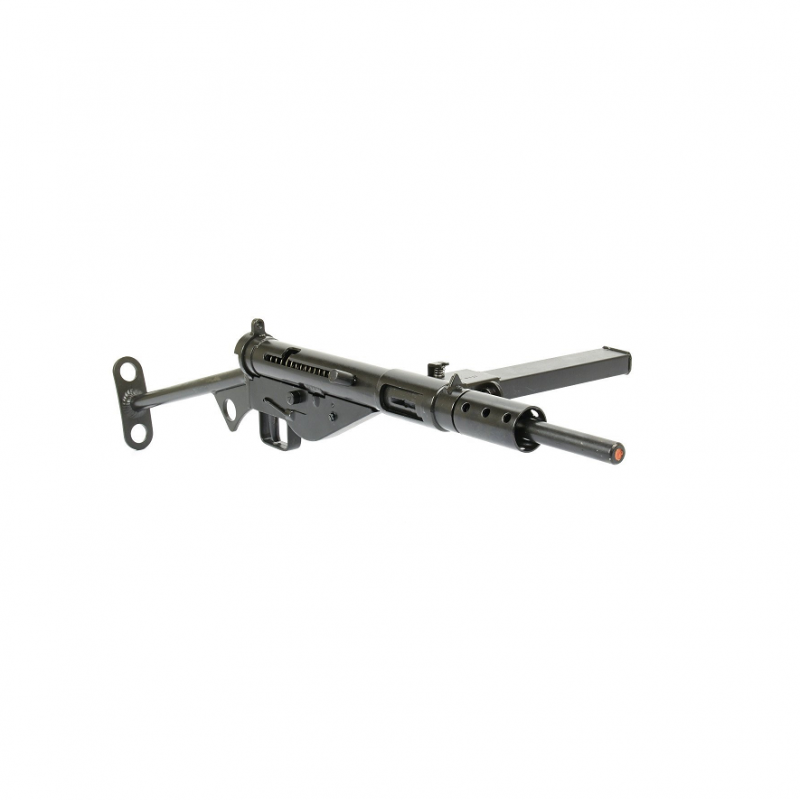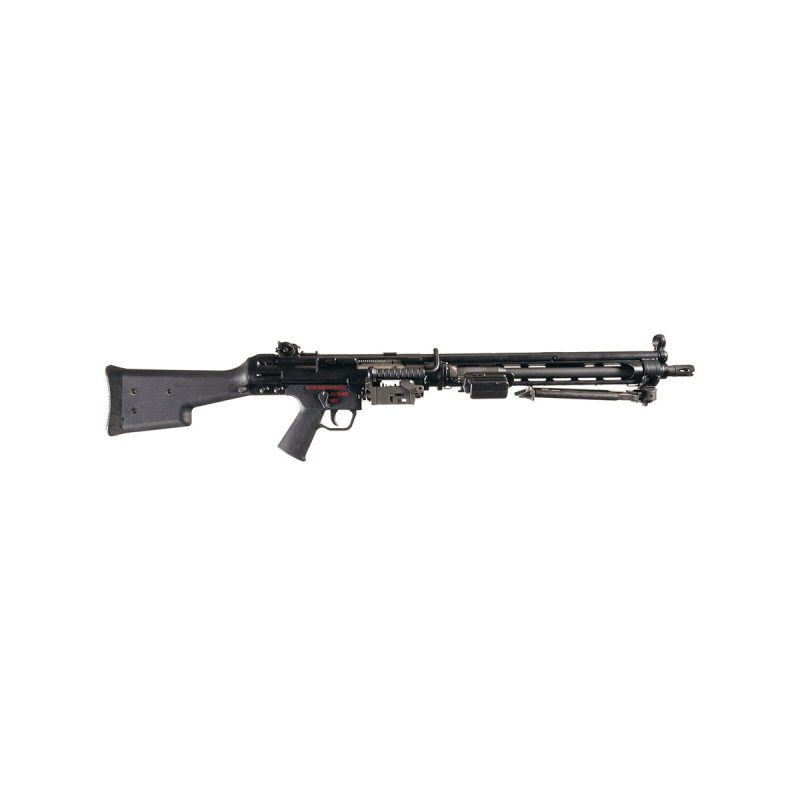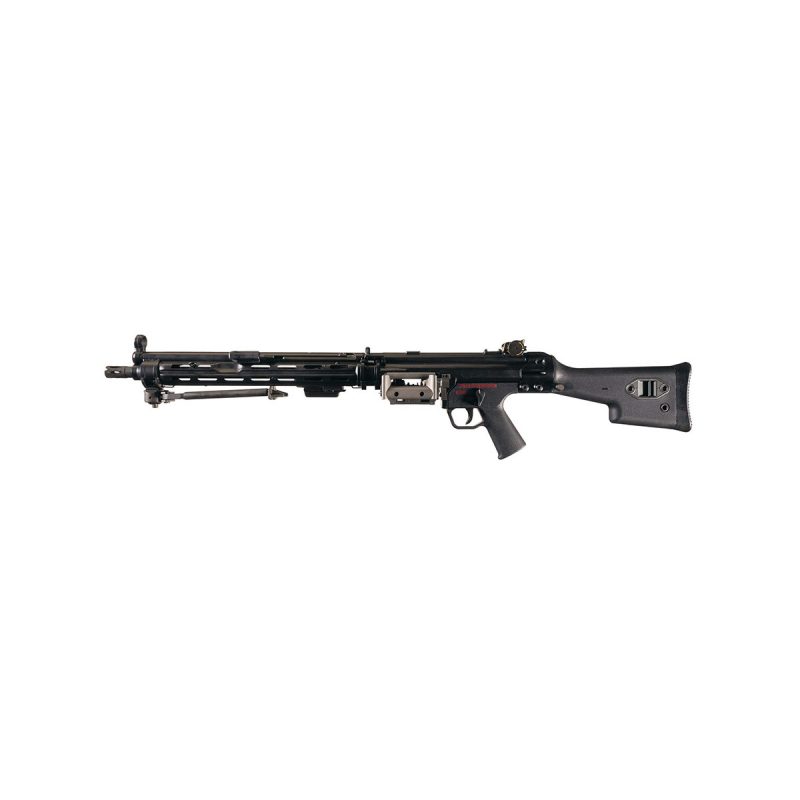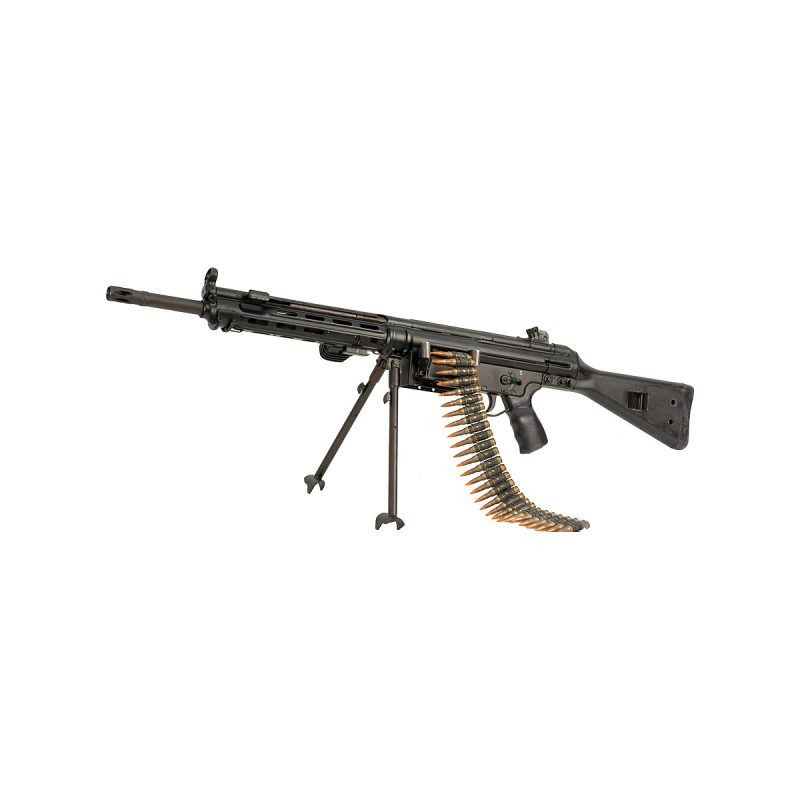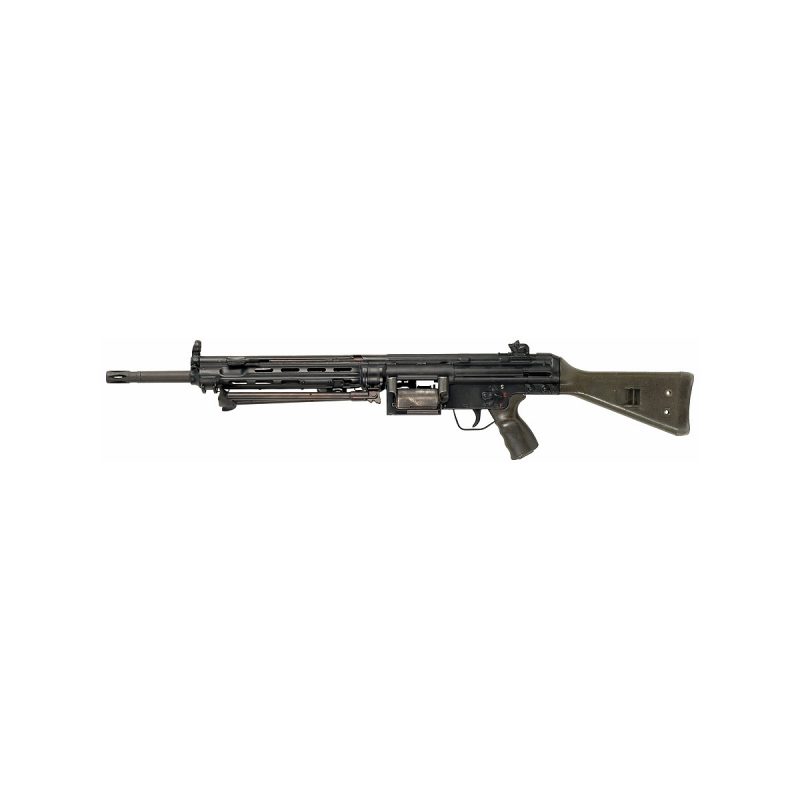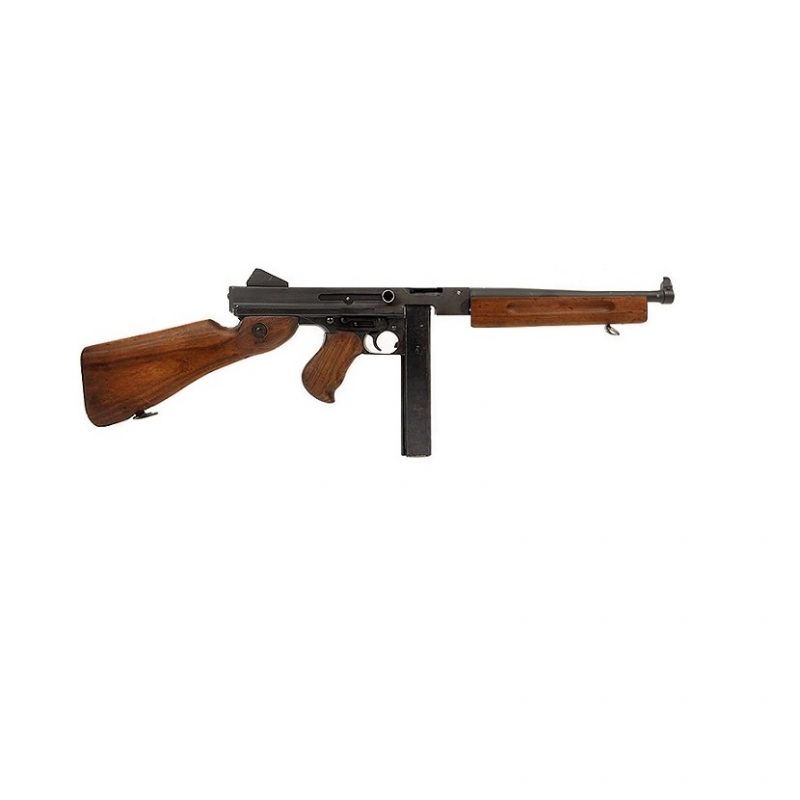Description
Originally designed the in the early 1930’s as an updated replacement to the British SMLE of World War 1 issue, the No4 didn’t go into general production until 1941. The main reason would ultimately be that the British Army had just lost thousands of SMLE’s on the beaches of Dunkirk during the British Expeditionary Force (BEF) evacuation from mainland Europe.
Due to the breakout of World War 2 and impending German invasion of the United Kingdom, the design of the No4 was intentionally much faster to produce, with the two main visual differences being the loss of the SMLE flat nose cap and move to a flip style rear sight.
Initially it was also issued with a rather basic/cheap ‘pig sticker’ spike bayonet, however post war a ‘bladed’ bayonet (similar to that issued for the No5) was brought into service.
Like the SMLE before it, a modified No4, such as this model, the No 4 Mk 1 (T) could be fitted with a No. 32 3.5× telescopic scope for sniper/sharp shooter use. It also had the addition of a wooded cheek-piece screwed into the stock, to allow the correct level eye relief with the scope.
The No4 (T) would continue service with the British Army throughout WW2 and up to the Suez Crisis of 1956, where it was already slowly being replaced with the new 7.62x51mm L42A1. However it would remain in service with commonwealth forces such as India for decades to follow.
Having been produced in such high numbers and having seen service in so many theaters of operations during WW2, post war, amongst the chaos of the repatriations and clean-ups, weapons such as this readily found themselves in the hands of the criminal underworld and paramilitaries. Their presence in these organizations would last for decades and even today the odd example still appears in an obscure civil war or police seizure.
Designer: James Paris Lee & RSAF Enfield
Designed: Early 1930’s (Standard N0 4)
Manufacturer: RSAF Enfield, The Birmingham Small Arms Company Limited and London Small Arms Co. Ltd (Plus many overseas license holders).
Produced: 1941-Present
